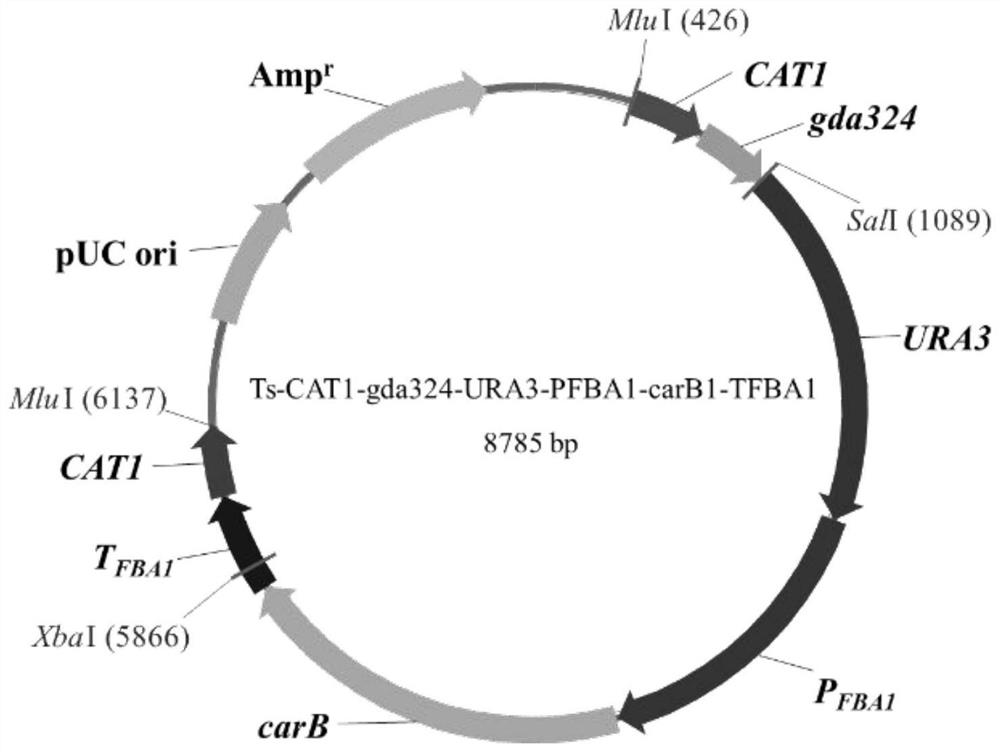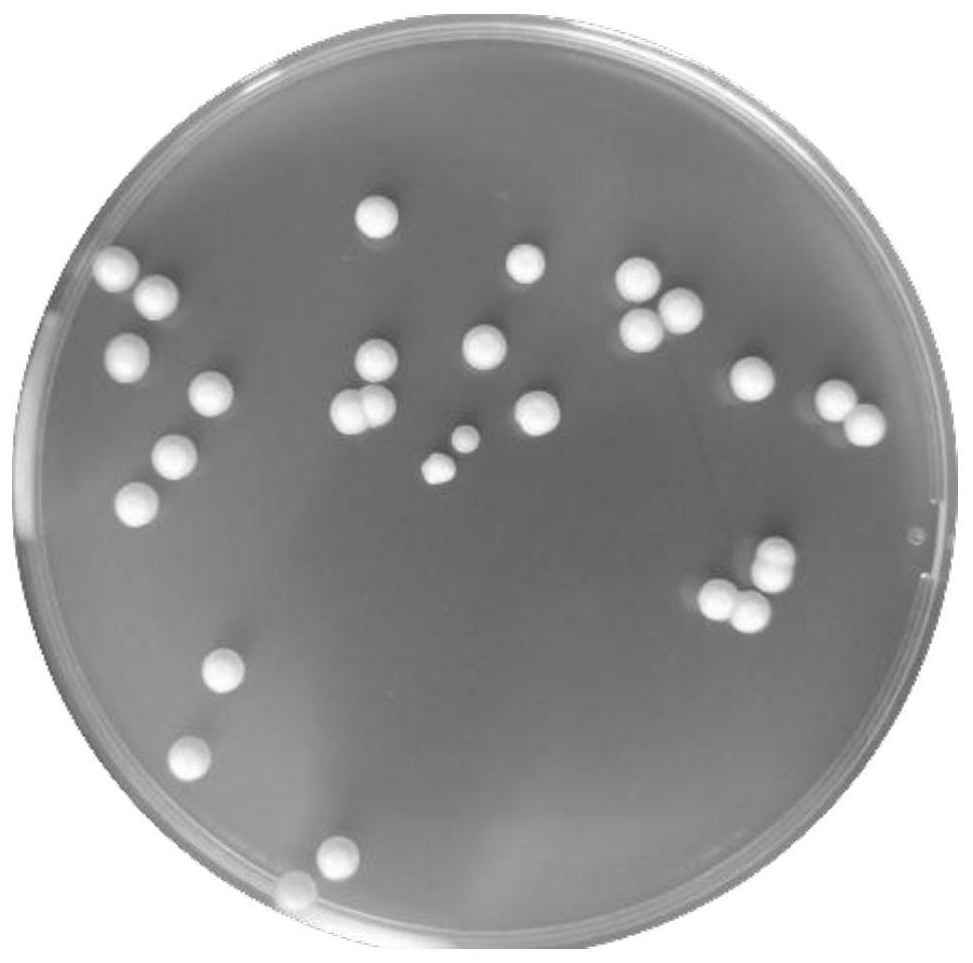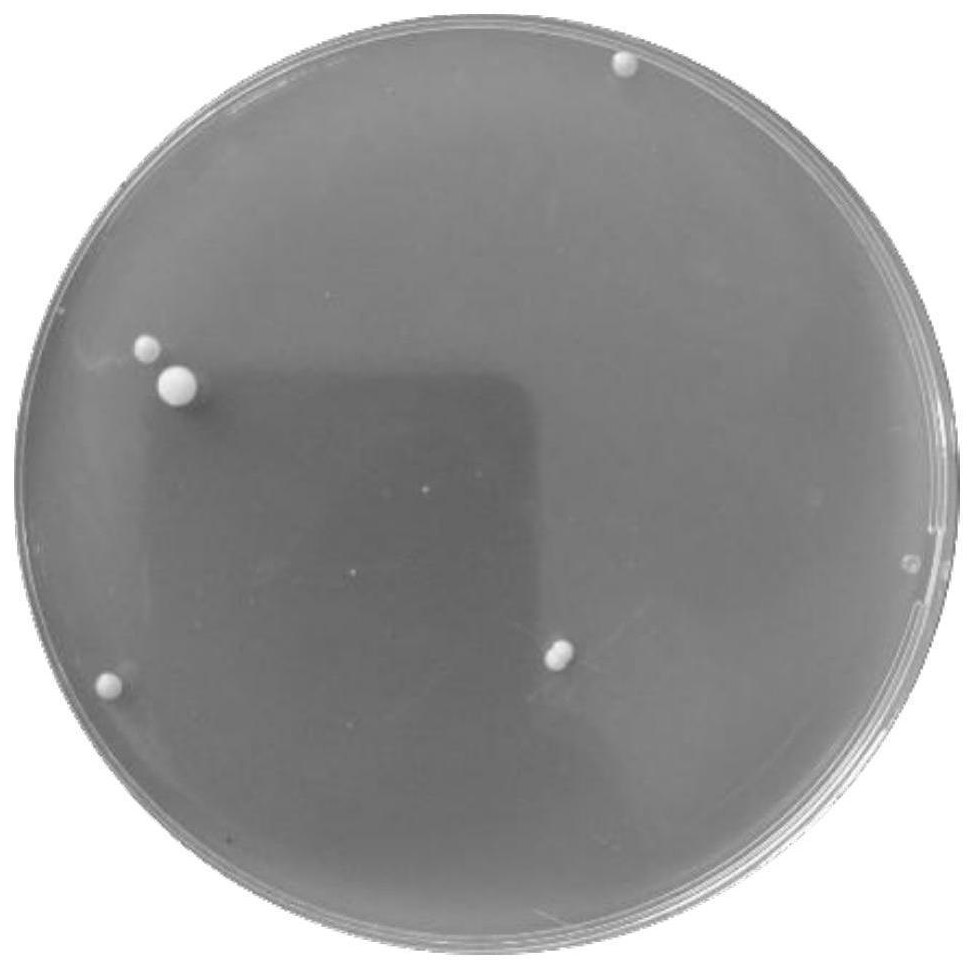A gene encoding lycopene dehydrogenase
A lycopene and dehydrogenase technology, applied in genetic engineering, plant genetic improvement, microorganism-based methods, etc., can solve problems such as low yield and poor genetic stability of strains
- Summary
- Abstract
- Description
- Claims
- Application Information
AI Technical Summary
Problems solved by technology
Method used
Image
Examples
Embodiment 1
[0051] Embodiment 1: Construction of uracil auxotrophic Candida tropicalis strain (ZZ)
[0052] Specific steps are as follows:
[0053] (1) Design primers URA3-F1: 5'-TACTCTAACGACGGGTACAAC-3' (SEQ ID NO.2) and URA3-R1: 5'-ACATCGGTACCAGTCAGAATTGTGCTAACCATTGCGAAT according to the URA3 gene sequence (SEQ ID NO.1) of Candida tropicalis in NCBI -3' (SEQ ID NO.3), URA3-F2: 5'-ATTCGCAATGGTTAGCACAATTCTGACTGGTACCGATGT-3' (SEQ ID NO.4) and URA3-R2: 5'-ACCCGATTTCAAAAGTGCAGA-3' (SEQ ID NO.5); then Using Candida tropicalis ATCC 20336 chromosomal DNA as a template, the 5' end fragment (1URA3, 436bp in length) and the 3' end fragment (2URA3, 488bp in length) of the URA3 gene were amplified by PCR;
[0054] (2) Using URA3-F1 and URA3-R2 as primers and 1URA3 and 2URA3 as templates, amplify the URA3 gene deletion cassette 1URA3-2URA3 by fusion PCR;
[0055] (3) The above-mentioned URA3 gene deletion cassette was passed through the lithium chloride conversion method (the lithium chloride conve...
Embodiment 2
[0056] Embodiment 2: the construction of gene expression cassette
[0057] Specific steps are as follows:
[0058] 1. Construction of carRP gene integration expression cassette:
[0059] (1) Design primers PGAP-F: 5'-GCTCTAGAAACGTGGTATGGTTGTAAGAAAC-3' (SEQ ID NO.7) and TGAP-R: 5'-GCTCTAGATCTGGTTTAGAAGTAGGGACTGTATG according to the GAPDH gene sequence (SEQ ID NO.6) of Candida tropicalis in NCBI -3' (SEQ ID NO.8); Using Candida tropicalis ATCC 20336 chromosomal DNA as a template, amplify the GAPDH gene by PCR, and then insert it into the pMD19-T Simple commercial vector to obtain the recombinant plasmid Ts-GAPDH; then Using PGAP-R: 5'-CCCAAGCTTTGTTTAAATTCTTTAATTG-3' (SEQ ID NO.9) and TGAP-F: 5'-GCGTCGACGCTATCCAACAAACTCTAG-3' (SEQ ID NO.10) as primers, using the plasmid Ts-GAPDH as a template, by A linearized DNA fragment carrying the GAPDH promoter and GAPDH terminator was obtained by PCR (GAPDH promoter-pMD19-TSimple vector-GAPDH terminator, abbreviated as P GAPDH -Ts-T GAP...
Embodiment 3
[0070] Embodiment 3: Construction of recombinant bacterial strain
[0071] Specific steps are as follows:
[0072] (1) The integrated expression cassette of the carRP gene obtained in Example 2 was transformed by the lithium chloride conversion method (the lithium chloride conversion method is described in the document "Lihua Zhang, et al. 2016, Development of an efficient genetic manipulation strategy for sequential gene disruption and expression Ofdifferent heterologous GFP genes in Candida tropicalis. Appl Microbiol Biot, 100 (22): 9567-9580 "in) transformed the uracil auxotrophic Candida tropicalis strain ZZ obtained in Example 1, and then screened transformants by minimal medium plates , the positive transformants were named ZZ-RP; the ZZ-RP strain was inoculated in liquid SM medium at 30°C, 200r min -1 In culture, direct repeats in chromosomes (i.e., carRP expression cassette POX4-gda324-URA3-P GAPDH -carRP -T GAPDH - The gda324 fragment in POX4 and the 3' end sequenc...
PUM
 Login to View More
Login to View More Abstract
Description
Claims
Application Information
 Login to View More
Login to View More - R&D
- Intellectual Property
- Life Sciences
- Materials
- Tech Scout
- Unparalleled Data Quality
- Higher Quality Content
- 60% Fewer Hallucinations
Browse by: Latest US Patents, China's latest patents, Technical Efficacy Thesaurus, Application Domain, Technology Topic, Popular Technical Reports.
© 2025 PatSnap. All rights reserved.Legal|Privacy policy|Modern Slavery Act Transparency Statement|Sitemap|About US| Contact US: help@patsnap.com



